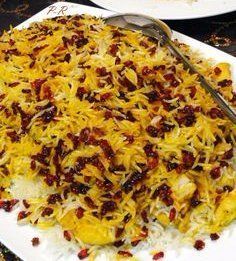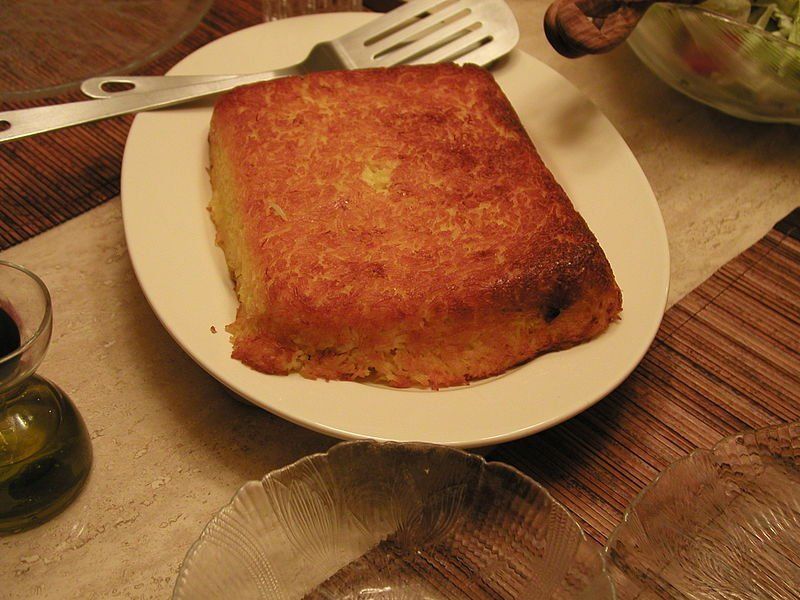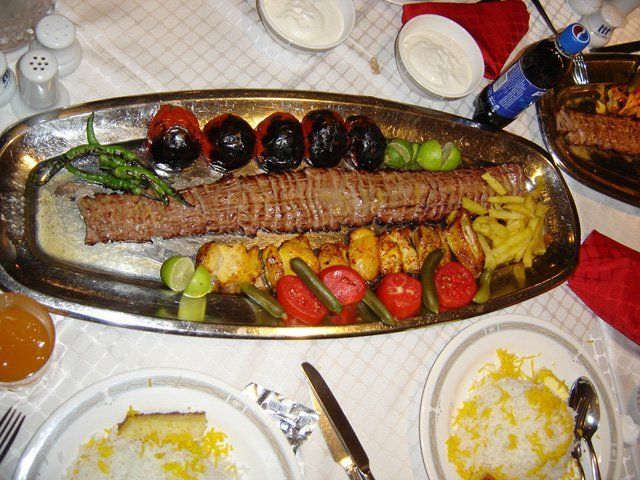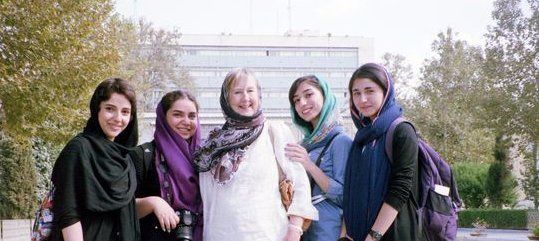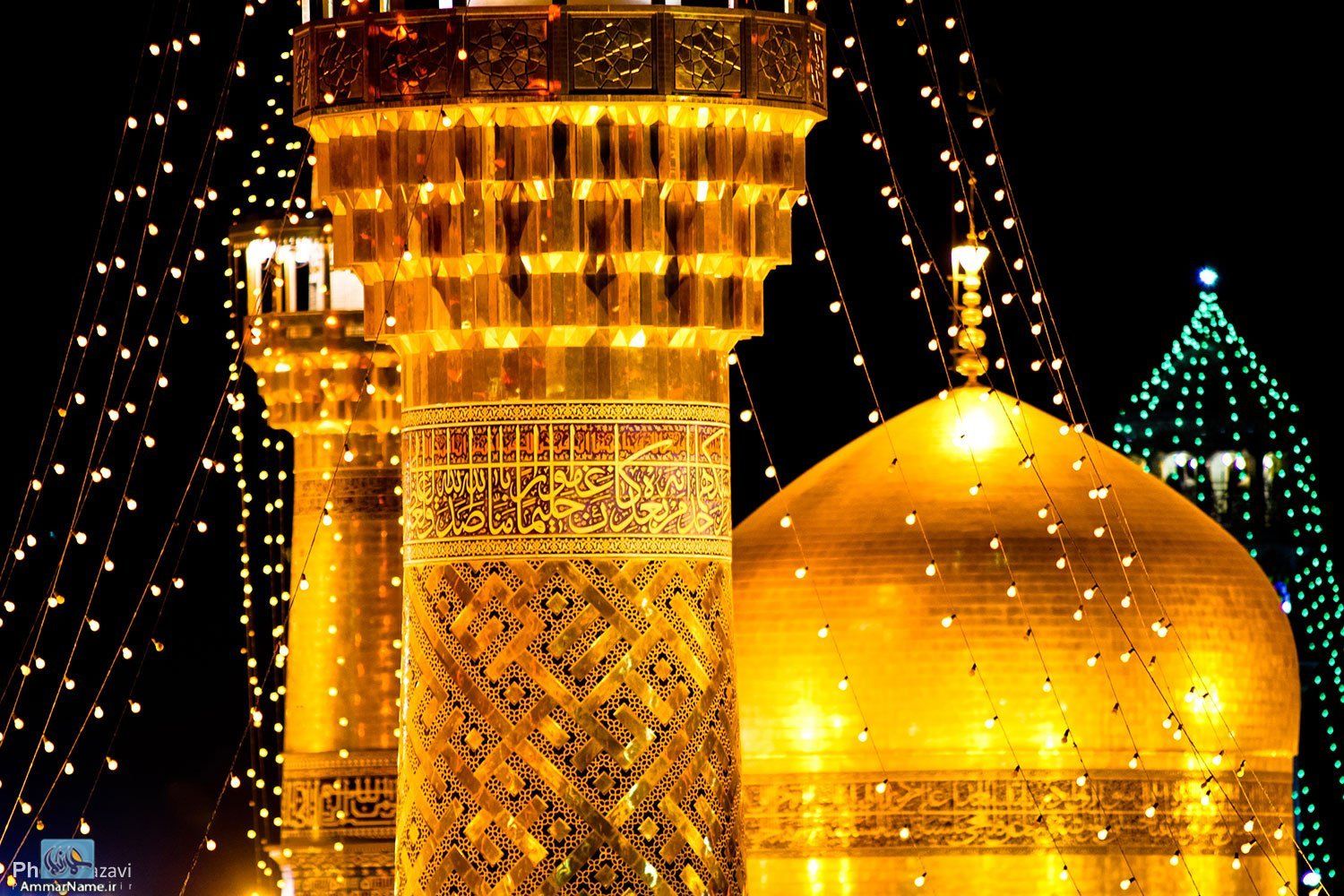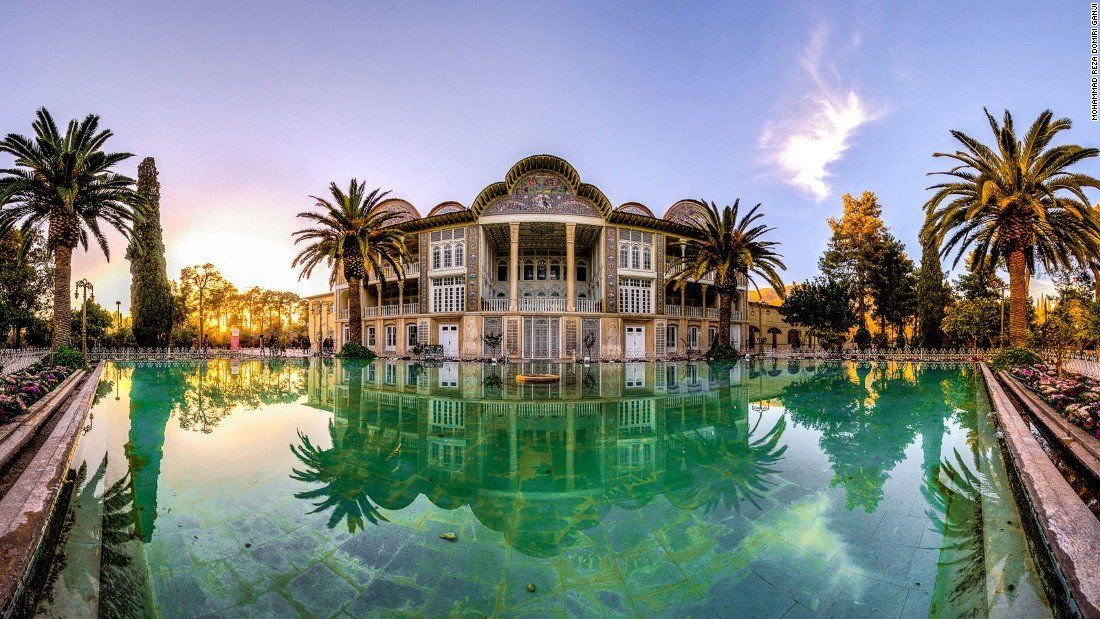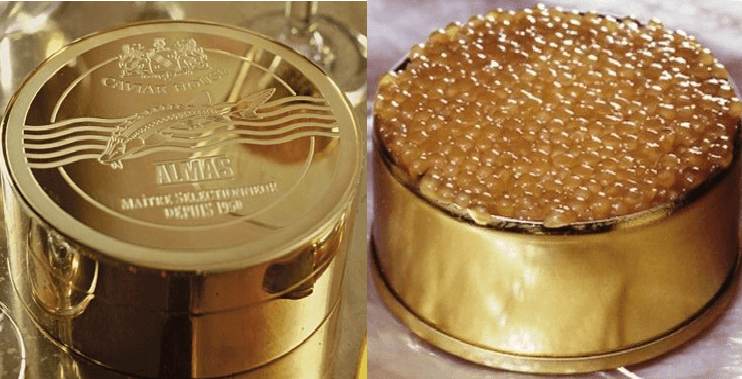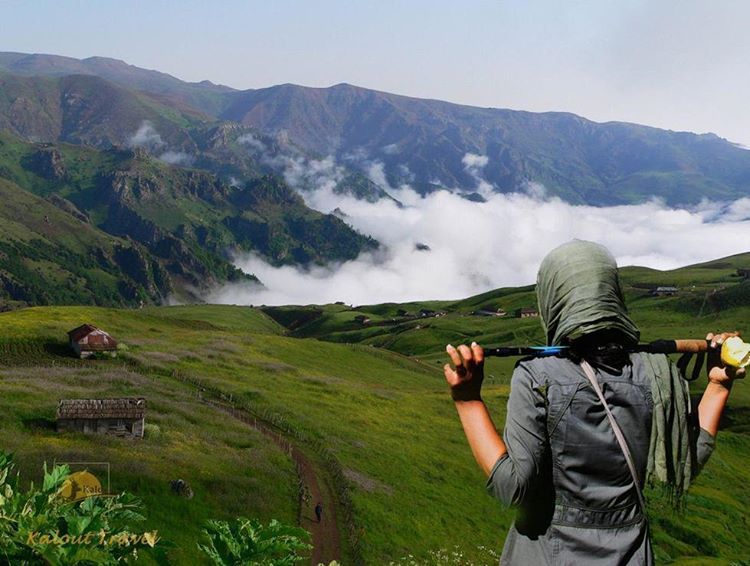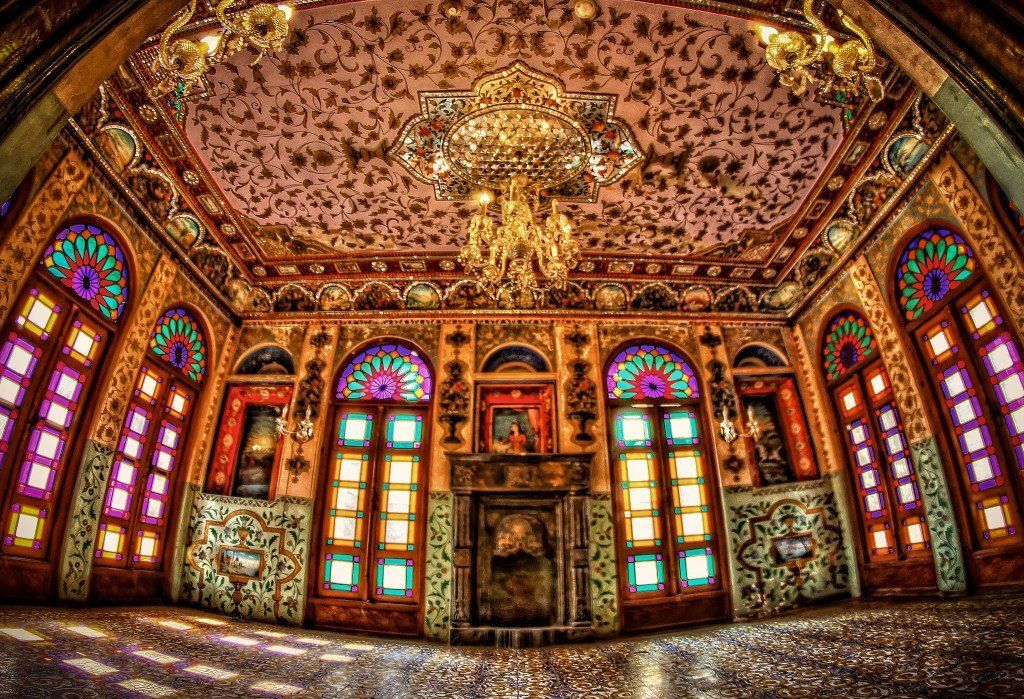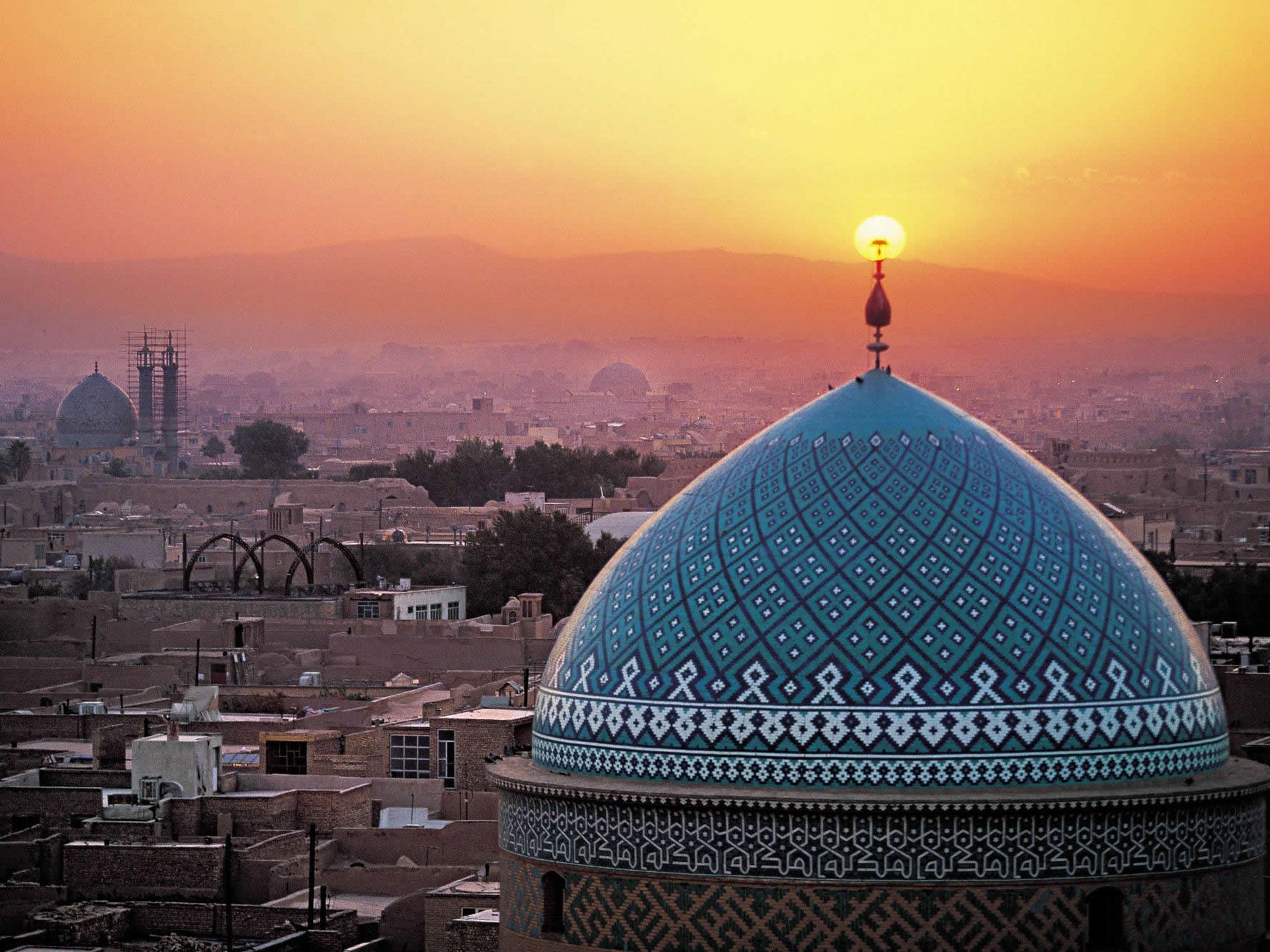Persian cuisine
Iranian cuisine or Persian cuisine (Persian: آشپزی ایرانی Ashpazi-ye Irani) is the traditional and modern style of cooking in Iran(formerly known as Persia).
Situated in West Asia (also known as the Middle East) with a diverse population, the Iranian culinary style is unique to Iran, though has historically both influenced and has been influenced by Iran's neighboring and conquered regions at various stages throughout its history. Specifically, these have been mutual culinary influences to and from Turkish cuisine, Azerbaijani cuisine, Kurdish cuisine,Caucasian cuisine, Mesopotamian cuisine, Levantine cuisine, Greek cuisine, Central Asian cuisine, and minor aspects from Russian cuisine.
Turkish cuisine, Azerbaijani cuisine and Iranian cuisine on the other hand have heavy mutual influence on each other, due to geographical proximity, ethnic relations (f.e Azerbaijanis, a Turkic people, are the second largest ethnicity in Iran) many common cultural aspects, shared empires, and conquerings by such as the Achaemenids, Sassanians, Seljuks, Safavids, Afsharids,Ottomans and Qajars.
Fresh green herbs are frequently used along with fruits such as plums, pomegranates, quince, prunes, apricots, and raisins. TypicalPersian main dishes are combinations of rice with meat, such as lamb, chicken, or fish, and vegetables such as onions, variousherbs, and nuts. To achieve a balanced taste, characteristic Persian flavorings such as saffron, dried lime, cinnamon, and parsleyare mixed delicately and used in some special dishes.

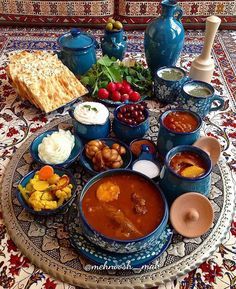
Iranian Dishes
Iranian cuisine includes a wide variety of foods ranging from Chelow kabab (rice served with roasted meat: barg, koobideh, joojeh, shishleek, soltani, chenjeh), khoresh (stew that is served with white Iranian rice: ghormeh sabzi, gheimeh, fesenjān, and others), āsh (a thick soup: for example āsh-e anār), kuku (vegetable soufflé), polo (white rice served alone or with the addition of meat, vegetables and herbs, including loobia polo, albaloo polo, sabzi polo, zereshk polo, baghali polo, and others), and a diverse variety of salads, such as Shirazi salad, pastries, and drinks specific to different parts of Iran. The list of Persian recipes, appetizers and desserts is extensive. A famous Iranian dish withsheep brain and hooves is called Kaleh Pacheh.
Rice
Tah-chin, a savory saffron rice-cake with a filling, commonly marinated chicken fillets..
The ubiquitous Persian Kabab is at most times served with either rice, or bread.
Sweet pilaf or shirin polo
The usage of rice, at first a specialty of Safavid court cuisine, evolved by the end of the 16th century CE into a major branch of Iranian cookery. Varieties of rice in Iran include champa, rasmi, anbarbu, mowlai, sadri, khanjari, shekari, doodi, and others. Traditionally, rice was most prevalent as a major staple item in the rice growing region of northern Iran, and the homes of the wealthy, while in the rest of the country bread was the dominant staple. The varieties of rice most valued in Persian cuisine are prized for their aroma, and grow in the north of Iran.
Cooking methods
There are three primary methods of cooking rice in Iran:
Method Description
- Polo (pilaf)
Rice that is prepared by soaking in salted water then boiling it. The parboiled rice (called chelo) is drained and returned to the pot to be steamed. This method results in an exceptionally fluffy rice with the rice grains separated and not sticky. A golden rice crust is created at the bottom of the pot called Tah-deeg (literally "bottom of the pot"). Tah-deeg is served plain, with thin bread such as lavash or slices of potato. Meat, vegetables, nuts and fruits are sometimes added in layers or completely mixed with the chelo and then steamed, such as Baghali Polo, Lubia Polo, Zereshk Polo, and Sabzi Polo. When chelo is in the pot the heat is reduced and a piece of thick cloth or towel is place on top of the pot to absorb excess steam. Chelo is plain rice served as an accompaniment to a stew or kebab (chelo khoresh badenjan, chelo kabab), while Polo is rice mixed with something (such as Baghali Polo, Zereshk polo, Loubia Polo). They are otherwise cooked in the same way.
- Kateh
Rice that is cooked until the water is absorbed completely. This is also the traditional dish of Gilan Province (described in detail below).
- Damy
Rice that is cooked almost the same as Kateh but at the start ingredients that can be cooked thoroughly with the rice are added such as grains and beans like lentils in "Adass Polo". In making Kateh the heat is reduced to minimum when the rice and other ingredients are almost cooked. If kept long enough on the stove without burning and over-cooking Damy and Kateh can also produce Tah-deeg. Damy literally means "steaming". A special form of Damy is Tah-chin, which is a mixture of yogurt, lamb (or chicken) and rice, plus saffron and egg yolks. However, chicken Tah-chin is more common than lamb Tah-chin.
Iranian Bread
Second only to rice is the production and use of wheat. There are said to be more than forty types of wheat breads from very dark to very light. Bread is called nān (نان) in Persian, as well as other regional major languages in Iran such as Kurdish, and it has been borrowed asNaan in English via Hindustani. There are four major Iranian flat breads:
Flatbread Description
Nan-e barbari
Thick and oval-shaped, also known as Tabrizi Bread or Nan-e Tabrizi, for its origins in and links to the city of Tabriz.
Nan-e lavash
Thin, flaky and round or oval, and is also the oldest known bread in the Middle East and the Caucasus. It is the most widely eaten bread in Iran as well as neighboring Turkey and the Caucasus.
Nan-e sangak
Triangle-shaped bread that is stone-baked.
Nan-e taftoon
Thin, but thicker than lavash, soft and round.
From crisp to limp, at least one type of flat bread will be a part of every meal. Nan-e lavash is an example of the thin crisp bread with good keeping qualities, while nan-e sangak is a fresh yeast bread, baked on hot stones and eaten while still warm.
Leavened Bread
Name Description
Nan-e Shirmal
Made like barbari, except with milk instead of water, in addition to a bit of sugar, and is eaten during breakfast or with tea.
Nan-e Ghandi
Sweet bread made like taftoon, and is eaten during breakfast or with tea.
Nan-e gisu
A sweet Armenian bread, which is eaten in the morning or with tea later in the day.
Nan-e dushabi
Bread made with grape syrup
Nan-e tiri
Made in a similar way to lavash
Nan-e tokhme-ru
Breads with sweet-smelling seeds on them
Nan-e khoshke-shirin
Sweet brittle bread baked in gentle heat
Nan-e khoshke-tanur
Brittle bread baked in gentle heat
Fruits and vegetables in Iran
Iran's agriculture produces many fruits and vegetables. A bowl of fresh fruit is common on most Persian tables and dishes of vegetables and herbs are standard sides to most meals.
The climate of the Middle East is conducive to the growing of fruits. These are not only enjoyed fresh and ripe as desserts but are also combined with meats and form unusual accompaniments to main dishes. When fresh fruits are not available, a large variety of dried fruits such as dates, figs, apricots and peaches are used instead. The list of fresh fruits includes dates and figs, many citrus fruits, apricots, peaches, sweet and sour cherries, apples, plums, pears, pomegranates and many varieties of grapes and melons. A small sweet variety of cucumber is popularly served as a fruit. Iran is one of the top date producers in the world; some special date cultivars, such as Rotab, are grown in Iran.
While the eggplant (aubergine) is "the potato of Iran", Iranians are fond of fresh green salads dressed with olive oil, lemon juice, salt and pepper, and a little garlic. Vegetables such as pumpkins, spinach, green beans, broad beans, courgettes, varieties of squashes, onions,garlic and carrots are commonly used in rice and meat dishes. Tomatoes, cucumbers and scallions often accompany a meal.
The term dolma describes any vegetable or fruit stuffed with rice or a rice-and-meat mixture: grape vine leaves, cabbage leaves, spinach, eggplant, sweet peppers, tomatoes,apples and quince. The most popular dolmas in Iran today are stuffed grape leaves, which are prepared by lightly parboiling the fresh leaves in salted water, then stuffing them with a mixture of ground meat, rice, chopped fresh herbs such as parsley, split peas, and seasoning. The dolmas are then simmered in a sweet-and-sour mixture of vinegar or lemon juice, sugar, and water. Fillings vary, however, from region to region and even from family to family. Stuffed cabbage and grape leaves are the only dolmas that can be served hot or cold. When intended to be served cold they generally do not contain meat, however. Fruit dolmas are probably a specialty of Persian cuisine. The fruit is first cooked, then stuffed with meat, seasonings, and sometimes tomato sauce; the dolmas are then simmered in meat broth or a sweet-and-sour sauce. In recent decades new variations have been introduced, largely under Western influence: Potatoes, artichokes, green peppers, tomatoes, and other vegetables are also stuffed.
A few examples of the main ingredients in Iranian specialties would include duck, pomegranates and walnuts; lamb, prunes and cinnamon; spinach, orange and garlic. KhoreshtBeh (quince stew) is an example of using fruits in Iranian cooking: chunks of lamb are stewed with slices or cubes of tart quince and yellow split peas; this dish is always served with rice.
The above are only a few examples of the combination of meats and vegetables, or meats and fruits plus seasonings that may go into chelo khoresh, a favorite Iranian dish that is served at least once daily. This is a dish of crusty baked rice topped by one of the stews listed, or any one of dozens more, limited only by price and availability of ingredients.
Dried fruits sold in spice shops are often used in food preparation
Ab ghoreh, the juice of Ghoreh (unripe grapes) or Verjuice, is used in various Iranian dishes. For example, it is an ingredient in Ash e sagh, a soup prepared with spinach, leeks, yellow split peas, and seasonings. Ab ghoreh is also used to simmer dolma-ye Kadu, which is stuffed summer squash. Ab ghoreh flavors several types of Khoresh like Khoresht-e Alu Esfenaj (stewed lamb with spinach and prunes),Khoresht-e Havij (stewed lamb with carrots), and Khoresht-e Chaghaleh badam (stewed lamb with fresh, unripe almonds). Unripe grapes are used whole in some dishes, such as Khoresht-e ghoreh (lamb stew with sour grapes). Ab ghoreh was frequently used until not too long ago also as a souring agent for a number of pickles, dried pickles, and spices. As a spice, Ghoreh powder (gard-e Ghoreh) was sometimes reinforced by
Drinks and desserts
Bastani, often containing flakes of frozen clotted cream and commonly flavored with saffron and rose water. It is usually served sandwiched between two thin crispy waffles
The traditional drink accompanying Iranian dishes is doogh, a combination of yogurt, carbonated or plain water, salt, and dried mint. Other drinks include sherbets known as Sharbat and "Khak shir". One favorite is Aab-e Havij, alternately called havij bastani, carrot juicemade into an ice cream float and garnished with cinnamon, nutmeg or other spices. There are also drinks that are not served with meals. These include Sheer Moz (banana milk shake), Aab Talebi (cantaloupe juice), and Aab Hendevaneh (watermelon juice). These are commonly made in stands or kiosks in street corners on summer days and on hiking trails. Aab Anaar (pomegranate juice) is also popular and has recently (2007) become popular in North America. Sekanjebin is a thick syrup made from vinegar, mint and sugar, served mixed with carbonated or plain water. It can be drunk mixed with a little rose water or used as a dip for Romaine lettuce.
Dessert dishes range from Bastani-e Za'farāni (Persian ice cream, also called Bastani-e Akbar-Mashti or Gol-o Bolbol) to faludeh (a frozen sorbet made with thin starch noodles and rose water). Persian ice cream is flavored with saffron, rose water, and includes chunks of heavy cream. There are also many types of sweets, divided into two categories: Shirini Tar (lit. moist pastry) and Shirini Khoshk (lit. dry pastry). The first category consists of French-inspired pastries with heavy whole milk whipped cream, glazed fruit toppings, tarts, custard-filled éclairs, and a variety of cakes. Some have an Iranian twist, such as the addition of saffron, pistachios, and walnuts. The second category consists of more traditional Iranian sweets: Shirini-e Berenji (a type of rice cookie), Shirini-e Nokhodchi (clover-shaped chickpea flour cookies), Kolouche (a large cookie usually with a walnut or fig filling), Shirini-e Keshmeshi (raisin and saffron cookies), Shirini-e Yazdi (small cakes originating from the city of Yazd), Nan-e kulukhi (a kind of large thick cookie without any filling), and others.
Other popular sweets include Zulbia, Bamieh and Gush-e Fil. Bamieh is an oval-shaped piece of sweet dough, deep-fried, and then covered with a syrup traditionally made from honey. Bamieh is similar to tulumba, but much smaller, 2 or 3 centimeters wide at most.Zulubia is made of the same sort of batter, also deep-fried, but poured into the oil in swirls, then covered with the same syrup (or with honey).[25] It is typically described as looking similar to a pretzel. Goosh-e Fil (lit. elephant's ear) is also made of deep-fried dough, in the shape of a flat elephant's ear, and then covered with powdered sugar and topped with pistachios. One of the classics, Halvardeh (Tehrani for halvā-arde, from halvā, an Arabic loan word meaning 'sweet', plus arde, the Persian word for tāhini), comes in various qualities and varieties, from mainly sugar to sesame seed paste (the aforementioned Persian arde) and pistachios.
Noghl, sugar-coated almonds, are often served at Iranian weddings.
Harireh , comparable to Gruel , is a very diluted and light farinaceous Persian dish made of fine wheat flour or wheat starch, or with rice flour or rice powder; sugar, oil, saffron, ground pistachios, or almonds may also be added. Because of its lightness, most dictionaries consider Harireh to be a suitable diet for sick people, but indeed it is a kind of dessert, which, according to its thickness and use, is variously called Masqati.
Essential accompaniments
There are certain accompaniments (mokhallafât) that are essential to every Iranian lunch (nâhâr) and dinner (shâm), regardless of the region. These include a plate of fresh herbs, called sabzi khordan: basil, cilantro, coriander, fenugreek, green onion, mint, radish (black, red, white), savory (marzeh, origany or sweet fennel), tarragon, and Persian watercress (shâhi); or a variety of flat breads, called nân ornoon (sangak, lavâsh, barbari), fresh white cheese (panir, somewhat similar to feta), walnuts, sliced and peeled cucumbers, sliced tomatoes and onions, yogurt, and lemon juice. Persian gherkins (khiyarshur) and mixed pickles (Torshi) are also considered essential in most regions.
Tea (chai) is served at breakfast. It may be served at other times, based on the region, usually many times throughout the day. For example, in the province of Khorasan, it is served immediately before and after lunch and dinner. The traditional methods of tea preparation and drinking differ between regions and peoples.
Fish
Fish is considered the first source of animal protein along the southern and northern coasts of the country, but it is not much eaten in the rest of Iran (mainly in smoked form)(Mahi-Dodi). Fish is traditionally served with rice and fresh herbs (Sabzi polow) on the first day of the new year (Norooz) at the end of the zodiacal month of Pisces.
Along the Caspian Sea coasts in Northern Iran, a popular dish is Shoor-mahi (salty fish), heavily salted fish steamed on a bed of smothered rice (kateh). Although the residents of these areas eat all kinds of fish, the most popular are species of sturgeon (Ozun bouroon), trout (Qezel ala), Caspian Kutum (mahi-e safid), salmon (mahi-e Azad), shad(kapoor). All parts of the fish, from the roe and intestines to the head, are used in cooking. Particularly popular in Māzandarān is a large, stuffed whitefish, similar to striped bass, baked and served with herbed rice; the stuffing usually consists of garlic, parsley, tarragon, scallions, coriander, mint, ground walnuts, barberries, raisins, lime juice, and salt and pepper, all sautéed in butter or oil.
In southern Iran along the Persian Gulf, the saltwater species are used : grouper (hamoor), croaker (mahi-e Shoorideh), sole (mahi-e Halwa), red snapper (mahi-e Sorkhoo),grunt (mahi-e Sangsar), flounder (kaf-e dast mahi), and mackerel (Shir mahi). Influences from far afield using tamarind and curry powder, combined with local ingredients including fresh herbs, fenugreek, and garlic, lend a distinctive character to these southern fish dishes.
Iranian Caviar
GOLDASHT, Iran — On the shores of the Caspian Sea, an ambitious project is under way to produce a pricey delicacy that could boost Iran’s economy as sanctions ease: caviar.
Iran, once the world’s biggest exporter of the luxury food, sold more than 40 tons of sturgeon eggs in 2000. Exports plunged to just 1 ton last year due to dwindling fish stocks and economic sanctions imposed by world powers in response to Iran’s nuclear program.
After Tehran struck a landmark deal this summer to curb its nuclear ambitions in exchange for lifting sanctions — including those on caviar — some in Iran are now counting on a revival in exports of the exclusive eggs.
Islami began the $100 million project in 2005 but it takes at least 12 years for sturgeon to mature and produce caviar. About 110,000 are beluga species that produce prized silver-gray eggs, the world’s most expensive caviar.
The fish farm aims to export 30 tons of salt-cured caviar and 2,000 tons of sturgeon meat in three years. Islami expects to earn $90 million a year based on an average price of $1,360 a pound for caviar. The United States, Europe and Japan have traditionally been Iran’s biggest export markets.
























